Are you a Quiet Speculation member?
If not, now is a perfect time to join up! Our powerful tools, breaking-news analysis, and exclusive Discord channel will make sure you stay up to date and ahead of the curve.
Sometimes it's worth remembering where you came from and seeking knowledge and tech from the past. The 2015 World Championship brought unexpected decks to the forefront with Living End and Bogles making waves almost out of nowhere. While those decks appear to have had their moment and then quietly vanished Yuuya Watanabe’s UW Control shell has really stuck with me.
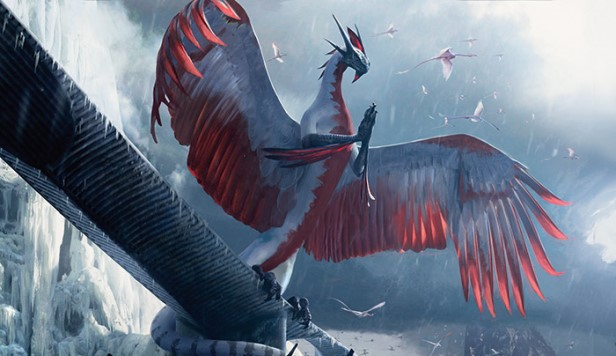
The deck ran zero Snapcaster Mages and used Sun Titan and Dragonlord Ojutai as finishers. This list looked strong and clearly took inspiration from decks that once gave Jund a hard time, namely the older UW Kitchen Finks and Sun Titan decks. Yuuya’s UW Control shell plays more like a midrange deck, since it uses Celestial Colonnade to finish grindy games while applying pressure earlier with Vendilion Clique and Dragonlord Ojutai. Today, I'm going to review the cards that make this deck tick, discussing the deck's strengths and weaknesses in the current Modern metagame.
[wp_ad_camp_1]
A Worthy Opponent
I picked up this deck online after the World Championship, and it is surprisingly complex with many decision trees. Once I started wading through the choices and got some reps under my belt, however, I discovered it has a lot of power. Looking at the full list, it immediately looks foreign, especially compared to some of the other UW Control shells floating around at events like SCG Modern Premier IQs and Grand Prix Oklahoma City, typified by the list that Trevor ran a few weeks ago.
White-Blue Control, Yuuya Wantanabe-2015 World Championship
If Sheridan is right then we will be seeing more and more UW Control soon, and I think that Watanabe's deck is far more powerful and worthy than most pilots are giving it credit.
We Have the Beats
In direct contrast to most traditional UW Control decks, this deck uses a higher number of creatures to close out games. Dragonlord Ojutai is a five-mana beater that does everything this deck wants: blocks well, survives removal, generates card advantage, and quickly ends the game. The ideal threat for this deck, Ojutai immediately applies massive pressure and swings a close board into your favor.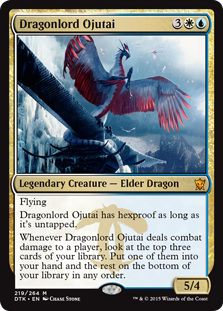 Most decks have a hard time removing Ojutai if he does not attack, making him an impenetrable brick wall to aggressive decks. He also has good synergy with some of the other cards in the deck, particularly Restoration Angel and the two utility lands, Minamo School at Water's Edge and Eiganjo Castle. Restoration Angel and the two utility lands can blank a piece of targeted removal while reestablishing hexproof to protect your Dragonlord. Minamo acts as instant speed hexproof for Ojutai and Eiganjo Castle can prevent combinations like Lightning Bolt and Kolighan's Command from killing Ojutai. Overall, Dragonlord Ojutai is the deck’s premier threat and closes the game out quickly, often in three turns with fetches and shocklands helping out.
Most decks have a hard time removing Ojutai if he does not attack, making him an impenetrable brick wall to aggressive decks. He also has good synergy with some of the other cards in the deck, particularly Restoration Angel and the two utility lands, Minamo School at Water's Edge and Eiganjo Castle. Restoration Angel and the two utility lands can blank a piece of targeted removal while reestablishing hexproof to protect your Dragonlord. Minamo acts as instant speed hexproof for Ojutai and Eiganjo Castle can prevent combinations like Lightning Bolt and Kolighan's Command from killing Ojutai. Overall, Dragonlord Ojutai is the deck’s premier threat and closes the game out quickly, often in three turns with fetches and shocklands helping out.
Next up is Sun Titan, the one-of engine that loops value cards and buries the opponent in a long and grindy game.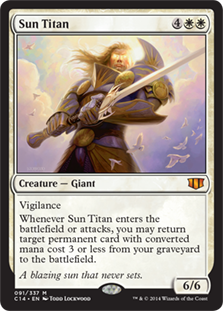 Titan has always been a powerhouse: when paired with Kitchen Finks and Ghost Quarter it can grind down and crush most fair decks. Watanabe adds in cards like Wall of Omens to create more card advantage and Vendilion Clique as a disruptive threat to stifle the opponent’s plans. Sun Titan can have more utility than just hitting those few cards, such as returning Celestial Colonnade or Flooded Strand, but those are the most common recursion targets. As with Ojutai, Sun Titan will quickly end the game if left unchecked. Titan is particular strong with Restoration Angel, who can set up an attack, get your recursion value, and then blink Sun Titan. This saves it from combat and gets another piece of value from the graveyard. In a format as fast as Modern, it is risky to run more than one six-drop and it will often be your first cut against non-GBx decks that want to grind and have few answers to recurring Kitchen Finks. While not as premium as Dragonlord Ojutai, Sun Titan serves a major role in the deck, giving greater late-game grinding potential without losing steam in the mid- to late-game like traditional UW Control.
Titan has always been a powerhouse: when paired with Kitchen Finks and Ghost Quarter it can grind down and crush most fair decks. Watanabe adds in cards like Wall of Omens to create more card advantage and Vendilion Clique as a disruptive threat to stifle the opponent’s plans. Sun Titan can have more utility than just hitting those few cards, such as returning Celestial Colonnade or Flooded Strand, but those are the most common recursion targets. As with Ojutai, Sun Titan will quickly end the game if left unchecked. Titan is particular strong with Restoration Angel, who can set up an attack, get your recursion value, and then blink Sun Titan. This saves it from combat and gets another piece of value from the graveyard. In a format as fast as Modern, it is risky to run more than one six-drop and it will often be your first cut against non-GBx decks that want to grind and have few answers to recurring Kitchen Finks. While not as premium as Dragonlord Ojutai, Sun Titan serves a major role in the deck, giving greater late-game grinding potential without losing steam in the mid- to late-game like traditional UW Control.
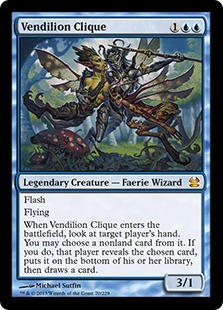 The next set of threats are the deck’s fliers, Restoration Angel and Vendilion Clique. Both of these cards synergize with the rest of the deck by having flash and by generating value through information or enter the battlefield effects. These two cards are often your first threat in the game and demand answers or they can start chipping away at your opponent’s life totals. Though neither threat is as difficult to answer as Ojutai or Titan, they both apply pressure to the opponent and can create blowout situations due to their flash ability. While both of these threats are impactful, they are more tied to the synergistic elements of the deck and can apply pressure. Titan and Ojutai are your main finishers, alongside the mighty Celestial Colonnade.
The next set of threats are the deck’s fliers, Restoration Angel and Vendilion Clique. Both of these cards synergize with the rest of the deck by having flash and by generating value through information or enter the battlefield effects. These two cards are often your first threat in the game and demand answers or they can start chipping away at your opponent’s life totals. Though neither threat is as difficult to answer as Ojutai or Titan, they both apply pressure to the opponent and can create blowout situations due to their flash ability. While both of these threats are impactful, they are more tied to the synergistic elements of the deck and can apply pressure. Titan and Ojutai are your main finishers, alongside the mighty Celestial Colonnade.
Column Attack
Celestial Colonnade plays a different role here than in traditional UW shells. For us, 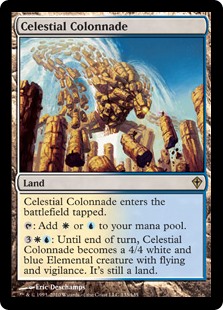 Colonnade is often a tempo card where you tap out to race in conjunction with another flier, ending the game in two swings around turn seven or eight. Colonnade is not the big premier end-game threat in this deck unlike its role in previous UWx control lists. Use Colonnade as a battering ram that can quickly close your opponent’s game before you hit the very late turns. Of course, the card still functions as a good finisher if you start running out of gas or the board gets stalled without your fliers. Colonnade is also a great blocker, assuming you can survive until turn six to get this additional blocker. Colonnade is much more flexible in this deck, where we have a tendency to tap out for threats like Ojutai or Sun Titan and an ability to end the game around turn eight or nine, rather than turn 15.
Colonnade is often a tempo card where you tap out to race in conjunction with another flier, ending the game in two swings around turn seven or eight. Colonnade is not the big premier end-game threat in this deck unlike its role in previous UWx control lists. Use Colonnade as a battering ram that can quickly close your opponent’s game before you hit the very late turns. Of course, the card still functions as a good finisher if you start running out of gas or the board gets stalled without your fliers. Colonnade is also a great blocker, assuming you can survive until turn six to get this additional blocker. Colonnade is much more flexible in this deck, where we have a tendency to tap out for threats like Ojutai or Sun Titan and an ability to end the game around turn eight or nine, rather than turn 15.
Protect and Remove
Like most blue control or midrange decks, this deck uses blue countermagic as a form of removal and white hard removal to deal with troublesome cards.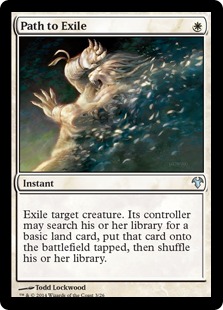 The deck runs four copies of Path to Exile for single problem creatures like Pestermite, Tarmogoyf, or Tasigur, the Golden Fang. Path is usually a last resort to avoid giving your opponent additional resources, but here Path is unavoidable. The deck runs two Detention Spheres to handle difficult planeswalkers like Liliana of the Veil, and for threats that easily multiply, such as spirit tokens or Voice of Resurgence. Detentions Sphere works very well against Zoo decks that cannot afford to play around a three-mana enchantment by sandbagging repeat copies of threats such as Kird Ape or Wild Nacatl. Another big benefit of being UW is access to three Supreme Verdicts that can help against Merfolk, Affinity, Zoo, and other decks that commit most of their resources to the board. It is also uncounterable against Delver decks, making it far more effective than other sweepers.
The deck runs four copies of Path to Exile for single problem creatures like Pestermite, Tarmogoyf, or Tasigur, the Golden Fang. Path is usually a last resort to avoid giving your opponent additional resources, but here Path is unavoidable. The deck runs two Detention Spheres to handle difficult planeswalkers like Liliana of the Veil, and for threats that easily multiply, such as spirit tokens or Voice of Resurgence. Detentions Sphere works very well against Zoo decks that cannot afford to play around a three-mana enchantment by sandbagging repeat copies of threats such as Kird Ape or Wild Nacatl. Another big benefit of being UW is access to three Supreme Verdicts that can help against Merfolk, Affinity, Zoo, and other decks that commit most of their resources to the board. It is also uncounterable against Delver decks, making it far more effective than other sweepers.
In addition to removal, the deck runs seven hard counterspells and two tempo-based soft counters. The deck cannot afford to run Mana Leak since it relies on Path as its main form of hard removal.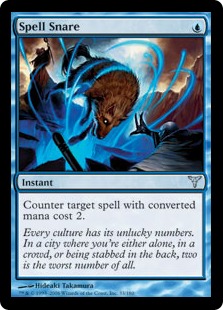 Instead, it plays four copies of Spell Snare to slow down opponents and hit some of the massive threats from decks like Abzan, Jund, Affinity and Infect. While four copies can seem like overkill, an unanswered Tarmogoyf or Dark Confidant can destroy you. The other great thing about Spell Snare is casting it on the draw enables turn one interaction outside of Path. Like most heavily blue decks, this deck also runs Cryptic Command. The difference here is that we k only run three copies. This UW Control build wants to end the game quickly, and drawing multiple Cryptics instead of threats is much worse here than in other blue decks.
Instead, it plays four copies of Spell Snare to slow down opponents and hit some of the massive threats from decks like Abzan, Jund, Affinity and Infect. While four copies can seem like overkill, an unanswered Tarmogoyf or Dark Confidant can destroy you. The other great thing about Spell Snare is casting it on the draw enables turn one interaction outside of Path. Like most heavily blue decks, this deck also runs Cryptic Command. The difference here is that we k only run three copies. This UW Control build wants to end the game quickly, and drawing multiple Cryptics instead of threats is much worse here than in other blue decks.
Best of the Rest
The rest of the deck acts as synergistic filler to stall for card advantage in order to find key cards you need, not unlike other control-oriented decks in Modern.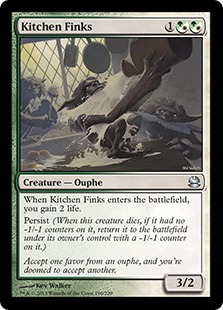 Kitchen Finks and Wall of Omens act as roadblocks for more aggressive strategies, are hard to cleanly remove, and gain extra value from Sun Titan recursion in the late game. Kitchen Finks’ life gain is very important against decks like Burn and Naya Zoo, since they put you very far behind early while you find your footing in the game. Cards like Ghost Quarter help you deal with troublesome lands and force opponents off splash colors depending on how they fetch. There have been a few times where, between Crucible of Worlds in the sideboard and Sun Titan in the main, I have Strip Mined my opponent out of the game with an endless stream of Ghost Quarters until they were equal on board but landless. After that, it's easy to pull ahead and take the game.
Kitchen Finks and Wall of Omens act as roadblocks for more aggressive strategies, are hard to cleanly remove, and gain extra value from Sun Titan recursion in the late game. Kitchen Finks’ life gain is very important against decks like Burn and Naya Zoo, since they put you very far behind early while you find your footing in the game. Cards like Ghost Quarter help you deal with troublesome lands and force opponents off splash colors depending on how they fetch. There have been a few times where, between Crucible of Worlds in the sideboard and Sun Titan in the main, I have Strip Mined my opponent out of the game with an endless stream of Ghost Quarters until they were equal on board but landless. After that, it's easy to pull ahead and take the game.
Sideboard
The sideboard is heavily skewed to beat decks like Abzan and Grixis, dedicating very few slots to address other matchups. Sideboard cards like Spellskite, Glen Elendra Archmage, Celestial Purge, Negate, Dispel, and Threads of Disloyalty are all very good against Abzan and Jund.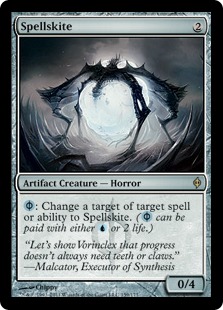 All of those cards, except Threads, also dramatically improve Grixis Control and Delver matchups. These cards are also highly relevant against Grixis Twin, although the threat of Splinter Twin can make it the hardest of the Grixis contests. Looking beyond the anti-Grixis arsenal, there are only six cards left for the rest of the format. Aven Mindcensor helps against Scapeshift, a deck that could be poised for a rise in popularity with Bring to Light acting as Scapeshifts five through eight. It also doubles as random hate against decks like Amulet Bloom and Company lists with Chord. Stony Silence targets Affinity and Crucible is for land destruction matchups like Living End and sometimes GBx decks that overload on Fulminator Mage. Overall, the sideboard is very GBx and Grixis-targeted, as these are two very big players in the meta. Although there is not much hate for other decks, most of those matchups are already decent or favorable (such as Affinity).
All of those cards, except Threads, also dramatically improve Grixis Control and Delver matchups. These cards are also highly relevant against Grixis Twin, although the threat of Splinter Twin can make it the hardest of the Grixis contests. Looking beyond the anti-Grixis arsenal, there are only six cards left for the rest of the format. Aven Mindcensor helps against Scapeshift, a deck that could be poised for a rise in popularity with Bring to Light acting as Scapeshifts five through eight. It also doubles as random hate against decks like Amulet Bloom and Company lists with Chord. Stony Silence targets Affinity and Crucible is for land destruction matchups like Living End and sometimes GBx decks that overload on Fulminator Mage. Overall, the sideboard is very GBx and Grixis-targeted, as these are two very big players in the meta. Although there is not much hate for other decks, most of those matchups are already decent or favorable (such as Affinity).
How Does UW Control Matchup?
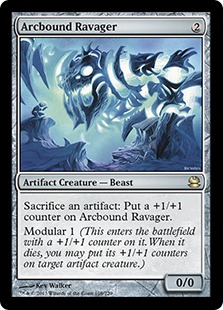 Looking at the matchups in a broader sense, the deck is very meta-dependent and can easily steal a tournament against the right field. First up is Affinity, one of the big players in our current meta. Affinity is an excellent matchup for this deck as you have interaction early with Spell Snare and Path to Exile with Supreme Verdict and Ghost Quarter coming online later to deal with the more problematic cards. The deck does not change much post board, but Stony Silence can just end the game on turn two since Affinity rarely has the cards to significantly improve the matchup from game one to game two (just save those Spheres for Ghirapur Aether Grid). Even if they do answer Silence, it buys you time to catch up tempo-wise and land your own answers and win conditions.
Looking at the matchups in a broader sense, the deck is very meta-dependent and can easily steal a tournament against the right field. First up is Affinity, one of the big players in our current meta. Affinity is an excellent matchup for this deck as you have interaction early with Spell Snare and Path to Exile with Supreme Verdict and Ghost Quarter coming online later to deal with the more problematic cards. The deck does not change much post board, but Stony Silence can just end the game on turn two since Affinity rarely has the cards to significantly improve the matchup from game one to game two (just save those Spheres for Ghirapur Aether Grid). Even if they do answer Silence, it buys you time to catch up tempo-wise and land your own answers and win conditions.
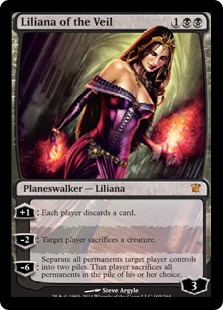 The GBx decks are slightly favorable. Their big hitter cards are Liliana of the Veil, Dark Confidant, and Tarmogoyf: answer those cards cleanly and start closing out the game with Ojutai or Sun Titan, and BGx will have a hard time catching up. That said, dealing with a resolved Liliana can be very difficult for this deck. After sideboarding, the matchup gets better with many tools added to deal with the three hard hitters, like Negate for Liliana or Threads of Disloyalty for Tarmogoyf and Dark Confidant. Overall, the Abzan and Jund matchups are slightly favorable if played properly. Abzan will be somewhat harder, with Lingering Souls to clog up the skies and Path to Exile as harder, non-damage-based removal.
The GBx decks are slightly favorable. Their big hitter cards are Liliana of the Veil, Dark Confidant, and Tarmogoyf: answer those cards cleanly and start closing out the game with Ojutai or Sun Titan, and BGx will have a hard time catching up. That said, dealing with a resolved Liliana can be very difficult for this deck. After sideboarding, the matchup gets better with many tools added to deal with the three hard hitters, like Negate for Liliana or Threads of Disloyalty for Tarmogoyf and Dark Confidant. Overall, the Abzan and Jund matchups are slightly favorable if played properly. Abzan will be somewhat harder, with Lingering Souls to clog up the skies and Path to Exile as harder, non-damage-based removal.
Grixis is a diverse archetype, and this deck has a good matchup against Twin and an excellent matchup versus two other major types of Grixis (Control and Delver). Path and Remand deal with delve cards cleanly so UW Control can push its advantage while presenting Kitchen Finks and Dragonlord Ojutai, threats that Grixis Control has trouble answering advantageously.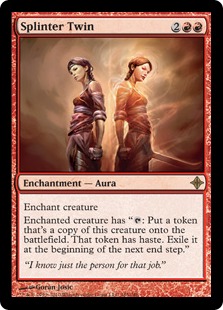 Restoration Angel is an all-star in this match-up and acts as a threat, an ambush blocker, and a way to blank removal. This deck also answers Grixis Delver’s threats cheaply and uses Supreme Verdict as a reset button after the opponent has burned through their resources, resulting in an easy way to close out games. Twin is the hardest variant since there is no easy way to answer Splinter Twin outside of countermagic and Path. Depending on the skill of the Twin player, they may board into a more controlling shell that eschews the combo, which is much better for us than for them. Then again, the players I have seen on Magic Online board into a more combo-oriented version with extra Dispels and Negates, which will make games two and three significantly harder.
Restoration Angel is an all-star in this match-up and acts as a threat, an ambush blocker, and a way to blank removal. This deck also answers Grixis Delver’s threats cheaply and uses Supreme Verdict as a reset button after the opponent has burned through their resources, resulting in an easy way to close out games. Twin is the hardest variant since there is no easy way to answer Splinter Twin outside of countermagic and Path. Depending on the skill of the Twin player, they may board into a more controlling shell that eschews the combo, which is much better for us than for them. Then again, the players I have seen on Magic Online board into a more combo-oriented version with extra Dispels and Negates, which will make games two and three significantly harder.
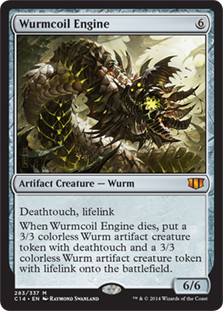 The deck’s worst match-ups are Tron and Burn. Both decks will just win the game if you give them too much time, and no matter how many counterspells you have or how many threats you drop, both decks are much more likely to have you dead on turn eight than the other way around. While there are some decent sideboard cards against Burn, such as Negate, Spellskite, and Dispel, Tron is the deck that really feels like a must-dodge matchup. Ghost Quarter helps far less than you think and we are very soft to a turn three Tron. Luckily, Tron is not a huge player in the meta right now. If it becomes prominent, however, this is not the deck to play.
The deck’s worst match-ups are Tron and Burn. Both decks will just win the game if you give them too much time, and no matter how many counterspells you have or how many threats you drop, both decks are much more likely to have you dead on turn eight than the other way around. While there are some decent sideboard cards against Burn, such as Negate, Spellskite, and Dispel, Tron is the deck that really feels like a must-dodge matchup. Ghost Quarter helps far less than you think and we are very soft to a turn three Tron. Luckily, Tron is not a huge player in the meta right now. If it becomes prominent, however, this is not the deck to play.
Moving forward, I feel like there are many ways to tune or tweak this deck to fight the meta. You could become a more controlling shell, or add more planeswalkers as threats. Note, however, that this is a very meta-dependent deck, and picking the wrong threats in the wrong meta is a recipe for a quick 0-3 side event tournament.
How would you shape the deck to fit your local meta or build it to prepare for a big event such as Grand Prix Pittsburgh? Let me know in the comments below!




I have been playing a similar list over the last two months. I would say that your assessment is mostly correct. But I think you should reexamine the burn match up. This match up is actually much more favorable then you say it is. Burn is heavily dependent upon creatures. Wall of Omens and Kitchen Finks roadblock pretty hard and finks acts as a three for one as you can gain 4 life and trade with 2 creatures over the course of a game. Finks into Angel is just nigh unbeatable against burn. Yes they have skull crack and atarkas command but you also have dispel and negate. UW has so much incidental life gain it can be hard for burn to beat as they will run out of gas before you do. The mana base is fairly friendly to your life total as well.
I really like this deck and this article. I think that Spreading Seas should be considered as an additional sideboard card to fight off Tron – Wall of Omens is useless in the matchup, but another cmc-2 card that replaces itself could do the trick.
i suspect that this deck is very soft to merfolks as relying on both blockers and islands while having few pieces of true removal sounds like exactly what you don’t want to do in this match
Between 3 copies of supreme verdict, 2 copies of detention sphere, and a whopping 4 path to exile, I think this deck has a very good merfolk matchup. Verdict just wrecks them
It depends on the Merfolk player. A smart one will play to beat Verdict and mitigate the removal. If UW catches Merfolk overcommitting then yes it will win, but savvy players know how to avoid that and win the damage race.
As a resident of the GP hosting city, you have Pittsburgh spelled incorrectly.
As for the deck, I am a pretty big fan of this build. It’s probably the most balanced of the UW builds we see popping up lately, so I think it’s a good choice for a large unknown like a GP.
I’d agree with ragtag that if you’re struggling with the Burn match up, you probably need to adjust how you are playing the deck or mulligan away hands that are too slow. Burn can still win this, because that’s just what Burn does, but main deck life gain, stall tactics, and quick cornering really help. Though if Burn is huge in the meta, UW Emeria is the build to choose in my opinion.
I like this deck but something I really would like to try in this deck is one copy of Heliod, God of the Sun. He creates more threats with his tokens, synergies great with Ojutai, not difficult to “awaken” in this deck and “survives” your own supreme verdict.
I’m rather confident that this deck should try to play Snapcaster and/or Jace, those cards are pretty absurd.
I play almost this exact deck, but have replaced the 2 ojutais for a 4th angel and a gideon jura and the legendary lands with a basic of each. I love ojutai but I don’t deem it necessary or as good as another flash threat with so much value added. Gideon could be anything really, but it’s great against creature matchups and jund and that’s a big % of meta at my store.
Tried 2 spreading seas and 25 lands instead of Gideon, but mana too inconsistent. I love the card but it doesnt’t do anything in alot of matchups and 25 lands is just not enough.
Neither snapcaster or jace seems a good fit (though i only tried the former, it doesn’t do enough with so few spells) for this build, since you dont play many spells you’d want to flash back and dont care about putting cards in your graveyard (except sun titan, but sun titan will be great 80% of the time anyway).
As others have pointed out, the burn matchup is actually very favorable for you. Agree with GR Tron though, it’s challenging and depends alot on if you draw your good cards and dont draw the terrible ones. Sideboard gets quite a bit better but I still feel like a dog.
Yes, I started playing the deck with 1 Gideon Jura and a 4th Resto Angel (since I didn’t have the Ojutais at first) and I liked it much better.
I have been playing variants the Yuuya’s UW list ever since he topped with it and play it every week at my locals and i love playing it. I think your assessments of the matchups are pretty good, but this deck has a ton of sideboard options to combat any deck in modern. My local shop is mostly burn and affinity and the burn matchup is better than the article suggests, 4 maindeck finks and walls are very good against them and restoaration angel is insane against them. Affinity and rock decks are good matchups too with verdict, sun titan, and ojutai. the worst matchups are definitely Tron and Splinter Twin though. Some other sideboard cards ive been playing around with for the tron matchup…Leonin arbiter, mindcensor(obviously), crucible is usually too slow against R/G tron, spreading seas is fine also but its slow. strip mining people with leonin arbiter is actually the best thing you can be doing in modern(IMO) hahaha. Thanks for the article on a strong underplayed deck and Great Read!